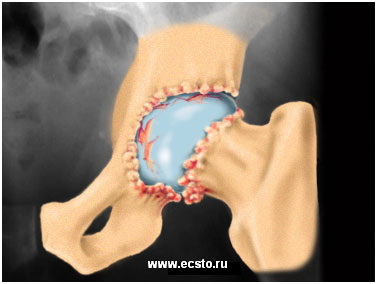Hip Osteoarthritis (Part One)
Osteoarthritis (OA) is a common problem for people after middle age. Osteoarthritis has been referred to several times as degenerative arthritis, or wear-and-tear arthritis. The hip, or the hip joint which is formed by the pelvis and femur bone is one of the joints most affected by osteoarthritis. If in the past, little could be done for this problem, modern medicine has evolved various treatment methods and solutions to this issue. This has made it possible to ease the lives of patients, has made it possible to reduce pain and increase the quality of daily life.
This material will help you understand:
- how osteoarthritis develops in the hip joint
- how is it diagnosed by doctors?
- how to make possible the reduction of pain and the increase in the quality of life?
Which parts of the hip does OA affect?
The articular cartilage is the layer that covers the surface of the hip joint. The cartilage, being smooth helps in the movement of the hip joint, making the friction forces as low as possible. The layer of bone under the articular cartilage is called the subchondral bone. The main problem of the degenerative process of osteoarthritis lies in the damage to the thin and smooth layer of the cartilage. Once the latter is damaged, the friction forces in the joint are carried out by the subchondral bone. Over time the subchondral bone gets damaged, changes its shape, movements in the joint become painful and over time become more difficult.
Causes
How does osteoarthritis (OA) develop in the hip?
Hip osteoarthritis can be caused by an injury or trauma suffered a long time ago in your life. After the injury, the biomechanical changes that occur in the hip joint may lead to the wearing of the joint surface. Another reason that changes the biomechanics of the hip are fractures near or within the hip joint, which damages the joint surface. Cartilage injuries, infections, or hemorrhages within the joint are some of the other reasons that damage the surface of the hip joint.
Not all cases of OA are related to the issues we just mentioned. It is believed that genetics make some people more prone to developing osteoarthritis in the hip.
Scientists also believe that problems in the subchondral bone may cause changes in the articular cartilage. As mentioned, the subchondral bone is the layer of bones under the articular cartilage. Normally, the articular cartilage protects the subchondral bone. However, some medical conditions may make the subchondral bone too hard or too soft, changing the way the cartilage normally absorbs and transmits impacts in the joint.
Avascular necrosis (AVN) is another cause of the degenerative process of the hip. In this condition, the head of the femur is not sufficiently supplied with blood which leads to the "death" of the femur bone. The "dead" femur bone cannot bear the weight of the body and often collapses. Avascular necrosis can be related to fractures, alcoholism, hip compression, and long-term treatment of other diseases with hormone-based medications, such as cortisone.
Symptoms
What are some of the pains of hip osteoarthritis?
The symptoms of hip osteoarthritis (OA) usually start as pain in the hip when bearing the body's weight. As the pathology progresses, you may limp - a way to reduce the amount of weight the hip has to bear. The changes that occur in the hip joint make it feel stiff, contracted, and tight which blocks its mobility. Osteophytes (small bone spurs) may also develop, which limit the mobility of the hip. Finally, as the condition worsens the pains may be felt all the time, even at night during sleep
Diagnosis
How can doctors identify this problem?
The diagnosis of hip osteoarthritis OA starts with a full history and physical examination by the orthopedic doctor. X-rays are necessary to determine the extent of cartilage damage.

Other tests may be performed if other reasons that may be the cause of osteoarthritis are suspected. Magnetic Resonance Imaging (MRI) may be necessary if the doctor suspects conditions such as: avascular necrosis of the femur head, ligament injuries or other soft tissue injuries of the hip joint. Blood tests may be necessary to rule out infectious arthritis